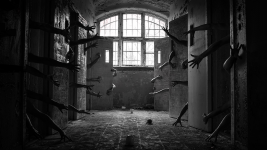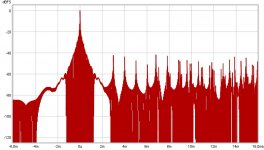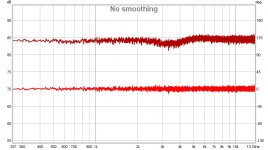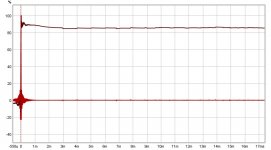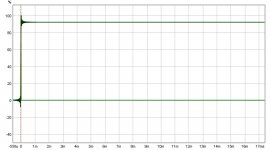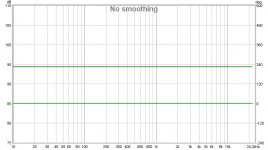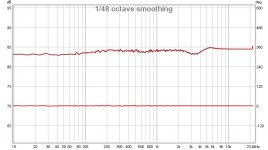Thanks for the tip! I doubt I'll ever get the luxury of having a projector, but you never know.
Just installed the GTX 1070, it's just loafing around with all the video I throw at it. It should, it's at least 5 times faster than my old Quadro K2000.
The upscaling for DVD content works excellent, it's impressive when used with the MadVR tricks. I couldn't run those scaling algorithms with the Quadro.
Just installed the GTX 1070, it's just loafing around with all the video I throw at it. It should, it's at least 5 times faster than my old Quadro K2000.
The upscaling for DVD content works excellent, it's impressive when used with the MadVR tricks. I couldn't run those scaling algorithms with the Quadro.
That used to be the case, however right now I'm pretty pleased with what I see so far.
Keep in mind I'm only judging it on a HD screen, not on ultra HD just yet.
There's a million ways to upscale within MadVR, not all of them are equally successful. However for me it's worth it to use PC hardware for this to get good results as I'm also heavily into 3D CAD etc. and already have the hardware. (or find an excuse to buy that graphic card )
)
I still have a lot to re-configure but at least it's up and running and does real good from the start.
Keep in mind I'm only judging it on a HD screen, not on ultra HD just yet.
There's a million ways to upscale within MadVR, not all of them are equally successful. However for me it's worth it to use PC hardware for this to get good results as I'm also heavily into 3D CAD etc. and already have the hardware. (or find an excuse to buy that graphic card
I still have a lot to re-configure but at least it's up and running and does real good from the start.
Happy New Year!!
I have been lurking this and other threads for quite some time trying to gain knowledge for my own build.
Was wondering if I may be so bold as to ask a question or two of Wesayso and others that have built arrays.
First of all, my build will be fully active. DSP and ICE amp modules. I plan on using 25 TC9 per side and use will be 2 channel music only.
That said, I dont need to dig much deeper than about 90hz.
The biggest questions are of box size/driver and power requirements.
1. 2 liters/driver is fine, but can I get away with a bit smaller?
2. I know through this thread that Wesayso has said that 250 watts gets around 20-30 hz at xmax. What can I expect at 90hz?
I dont have all the modeling software and test equipment (yet) so just trying to get an idea for budgetary purposes.
Thank you in advance for for any help.
I have been lurking this and other threads for quite some time trying to gain knowledge for my own build.
Was wondering if I may be so bold as to ask a question or two of Wesayso and others that have built arrays.
First of all, my build will be fully active. DSP and ICE amp modules. I plan on using 25 TC9 per side and use will be 2 channel music only.
That said, I dont need to dig much deeper than about 90hz.
The biggest questions are of box size/driver and power requirements.
1. 2 liters/driver is fine, but can I get away with a bit smaller?
2. I know through this thread that Wesayso has said that 250 watts gets around 20-30 hz at xmax. What can I expect at 90hz?
I dont have all the modeling software and test equipment (yet) so just trying to get an idea for budgetary purposes.
Thank you in advance for for any help.
1) if 2 litres is fine, why not just settle for the optimal?
2) I suppose you mention 90Hz because you want to cross to subs. I would suggest to go lower than that. At least 40Hz. Myself, I can localize 90Hz. But letting the subs do 40 and lower should be easier. Also, you'll get stereo bass down to 40Hz, and there's a lot more information down there than most people think.
You'll see/hear that line arrays carry their sound, distortions free, and you'll be reaching ear splitting levels easily, even with "only" 250W.
2) I suppose you mention 90Hz because you want to cross to subs. I would suggest to go lower than that. At least 40Hz. Myself, I can localize 90Hz. But letting the subs do 40 and lower should be easier. Also, you'll get stereo bass down to 40Hz, and there's a lot more information down there than most people think.
You'll see/hear that line arrays carry their sound, distortions free, and you'll be reaching ear splitting levels easily, even with "only" 250W.
I'd still shoot for an enclosure with about 2 litres for each driver to not make it overly damped. Smaller is possible, the examples are here. Look at the enclosure from Koldby and RA7.
For the longest time I was using a 100 watt amplifier which gave me enough output. The biggest difference I noticed by going with a more powerful amplifier was in the control it had at the lowest frequencies (*). Output wise you'll have enough to be dangerous to the ears from 90 Hz and up.
I would always run them a bit lower than 90 Hz though, one of the fun features of arrays is it's coherency throughout the frequency spectrum.
As seen in my plots the positioning of the arrays in the room and placement away from walls (mine are pretty close with the baffle about half a meter from the front wall) all determine the capabilities in the lower registries. My room isn't symmetrical as seen from the placement of the arrays and the listening space. Here one array can help out the other side if these dips are low enough in frequency. Using subs one can play with the arrays and subs to get it as even as possible over your listening area. I would definitely let the measured output decide where to hand off one to the other. Keeping bass in Stereo is highly recommended, at least above 40-60 Hz. In most songs the lowest frequencies really support the ambience of the songs, it's even a feel thing as well as being heard.
Plan your room and arrays to work together. Look at placement options for best results and know that any plane parallel to the array (like side walls) can cause a very noticeable change in perception of things like imaging and cause coloration that's hard to fight with DSP. Every thing you can solve with passive means, like positioning of the arrays or damping of first reflections, helps you to get the best results.
There's a lot of graphs in this thread and also from others, like the threads from RA7, Halair etc. I've seen even more than was published here as I have helped setup quite a few of them. Plan your room. What can you do there to help getting it all to work together.
If you have the option and space I'd use diffusers behind the listening position. For me, I simply did not have the space, so I used damping and virtual ambient channels to help get me a more convincing "space".
There is more to good sound than just building a pair of speakers. In my opinion it should all work together to be able to get the best out of it. Even though I wasn't totally free in setting up the room I managed to do alright by planning ahead.
I'd love to have a dedicated space where I could go completely bonkers .
.
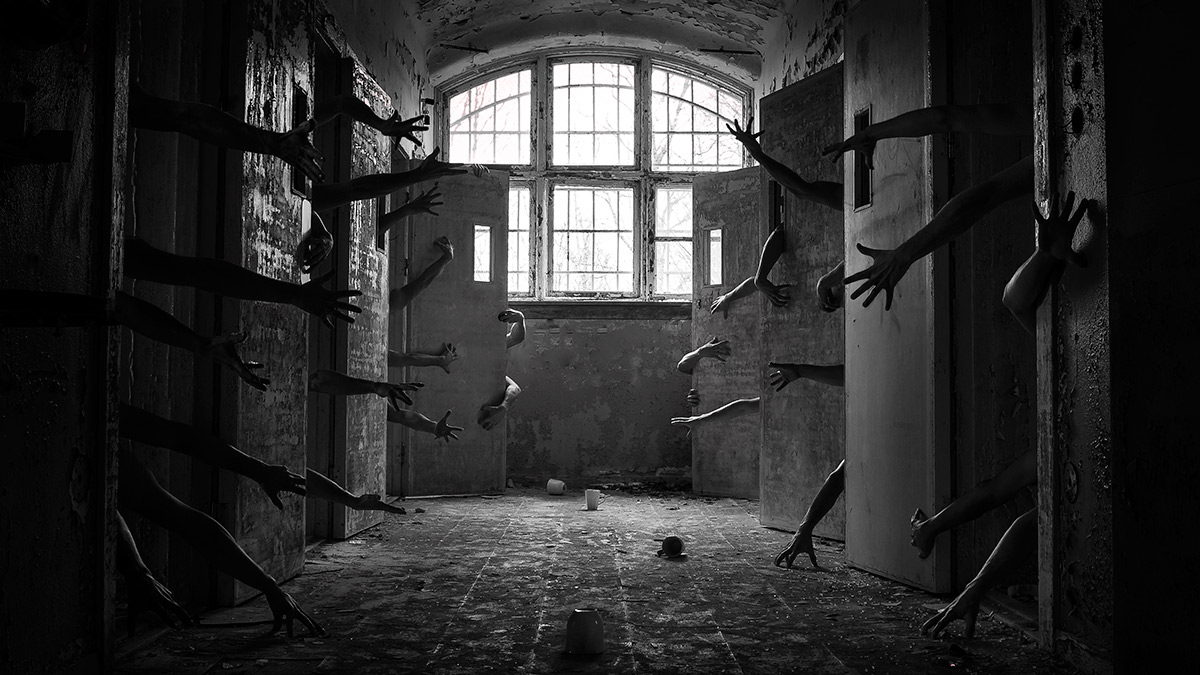
(*) there were other differences as well, but just look up the part where we played with about 5 different amps.
For the longest time I was using a 100 watt amplifier which gave me enough output. The biggest difference I noticed by going with a more powerful amplifier was in the control it had at the lowest frequencies (*). Output wise you'll have enough to be dangerous to the ears from 90 Hz and up.
I would always run them a bit lower than 90 Hz though, one of the fun features of arrays is it's coherency throughout the frequency spectrum.
As seen in my plots the positioning of the arrays in the room and placement away from walls (mine are pretty close with the baffle about half a meter from the front wall) all determine the capabilities in the lower registries. My room isn't symmetrical as seen from the placement of the arrays and the listening space. Here one array can help out the other side if these dips are low enough in frequency. Using subs one can play with the arrays and subs to get it as even as possible over your listening area. I would definitely let the measured output decide where to hand off one to the other. Keeping bass in Stereo is highly recommended, at least above 40-60 Hz. In most songs the lowest frequencies really support the ambience of the songs, it's even a feel thing as well as being heard.
Plan your room and arrays to work together. Look at placement options for best results and know that any plane parallel to the array (like side walls) can cause a very noticeable change in perception of things like imaging and cause coloration that's hard to fight with DSP. Every thing you can solve with passive means, like positioning of the arrays or damping of first reflections, helps you to get the best results.
There's a lot of graphs in this thread and also from others, like the threads from RA7, Halair etc. I've seen even more than was published here as I have helped setup quite a few of them. Plan your room. What can you do there to help getting it all to work together.
If you have the option and space I'd use diffusers behind the listening position. For me, I simply did not have the space, so I used damping and virtual ambient channels to help get me a more convincing "space".
There is more to good sound than just building a pair of speakers. In my opinion it should all work together to be able to get the best out of it. Even though I wasn't totally free in setting up the room I managed to do alright by planning ahead.
I'd love to have a dedicated space where I could go completely bonkers
(*) there were other differences as well, but just look up the part where we played with about 5 different amps.
Attachments
Last edited:
Thank you both for the responses. I will keep it to 2 litres, was just trying to keep a very narrow baffle which makes for a deeper box and a bit less WAF.
I plan on using 2 1x200 watt amps so it seems like I should still have plenty of power for decent low end.
In playing with miniDSP and my current diy speaker I just seemed to find that when adjusting the high pass 90hz was about where I started to notice a difference.
My room will be a bit of struggle as I dont have much wiggle room off the side walls, but I am a long way off from worrying about that.
I plan on using 2 1x200 watt amps so it seems like I should still have plenty of power for decent low end.
In playing with miniDSP and my current diy speaker I just seemed to find that when adjusting the high pass 90hz was about where I started to notice a difference.
My room will be a bit of struggle as I dont have much wiggle room off the side walls, but I am a long way off from worrying about that.
I've been playing a lot with the original shuffler, a variant with later timed reflections and even some CTC (cross talk cancelation) schemes over the past weeks. All for Home Theatre, to see if I could get more even tonality across the left/right/phantom centre.
Mid/side EQ only always sounded a bit more "dull" for lack of a better way of describing it. While the original shuffler works well to fix a lot of that, it isn't evenly balanced in the seats next to the sweet spot. One seat gets a more uneven balance, depending on the actual pulses used.
The version with later timed reflections does cure that, to some extend, but it's way harder to get a good balance in the center.
The cross talk cancelation's end result is getting me results much like the mid/side EQ. I actually prefer the mid/side EQ as it's less detrimental to the original sound waves. Yes, You can achieve marvellous results with it, but it is a small sweet spot kind of thing. Not what I'd like, good spots all over the couch.
So I figured to try something else. Within the Lexicon suite there's a random delay tool. You get to pick 4 delayed reflections and can place (pan) them across the stage and even insert feedback in the opposite channel. It's meant for delays outside the Haas limit, but fully adjustable and usable for shorter delays. And they remain random, not at a fixed spot or time. Even those parts are fully adjustable in many ways.
I can't say much yet, but it does seem to be able to fill in some of the tonal holes. I need way more time to get to any kind of verdict though. Right now my listening sessions are half an hour here, an hour there spread across the week.
Plus I don't even know the original (tonal) balance of the material I'm listening to, even if I try to get a feel for it by listening trough headphones. I'm trying to concentrate on the balance differences between side panned and center sounds and have found quite a few neat examples where the players move across the screen.
I'll admit I'm fudging over details here. It was way more than acceptable from the start, I'm just trying all options to see if I can learn from it.
Some soundtracks from movies are a fun way to compare a stereo mix with it's 5.1 counterpart (as played back on my 4.0 array+ambient). As I have been optimising Stereo for quite a while, I even prefer to listen to a few of my concert registrations in Stereo.
I'm just trying to find ways to improve the 5.1 (actually running as 4.0) presentation as it may give me some insights that help get Stereo even better.
I've never focussed on (optimising) HT before, it was just a fun thing to have on the side. I'm hoping it will help me to get a greater understanding of the perceptual differences between hearing an actual center channel and having spaced speakers play that same thing.
I do know that absorbing the early reflections made a huge difference here. Basically unmasking more of the cross talk effects in the process.
Enough with the rambling again... if I find something useful, I'll post about it.
So far it's still just messing around .
.
Mid/side EQ only always sounded a bit more "dull" for lack of a better way of describing it. While the original shuffler works well to fix a lot of that, it isn't evenly balanced in the seats next to the sweet spot. One seat gets a more uneven balance, depending on the actual pulses used.
The version with later timed reflections does cure that, to some extend, but it's way harder to get a good balance in the center.
The cross talk cancelation's end result is getting me results much like the mid/side EQ. I actually prefer the mid/side EQ as it's less detrimental to the original sound waves. Yes, You can achieve marvellous results with it, but it is a small sweet spot kind of thing. Not what I'd like, good spots all over the couch.
So I figured to try something else. Within the Lexicon suite there's a random delay tool. You get to pick 4 delayed reflections and can place (pan) them across the stage and even insert feedback in the opposite channel. It's meant for delays outside the Haas limit, but fully adjustable and usable for shorter delays. And they remain random, not at a fixed spot or time. Even those parts are fully adjustable in many ways.
I can't say much yet, but it does seem to be able to fill in some of the tonal holes. I need way more time to get to any kind of verdict though. Right now my listening sessions are half an hour here, an hour there spread across the week.
Plus I don't even know the original (tonal) balance of the material I'm listening to, even if I try to get a feel for it by listening trough headphones. I'm trying to concentrate on the balance differences between side panned and center sounds and have found quite a few neat examples where the players move across the screen.
I'll admit I'm fudging over details here. It was way more than acceptable from the start, I'm just trying all options to see if I can learn from it.
Some soundtracks from movies are a fun way to compare a stereo mix with it's 5.1 counterpart (as played back on my 4.0 array+ambient). As I have been optimising Stereo for quite a while, I even prefer to listen to a few of my concert registrations in Stereo.
I'm just trying to find ways to improve the 5.1 (actually running as 4.0) presentation as it may give me some insights that help get Stereo even better.
I've never focussed on (optimising) HT before, it was just a fun thing to have on the side. I'm hoping it will help me to get a greater understanding of the perceptual differences between hearing an actual center channel and having spaced speakers play that same thing.
I do know that absorbing the early reflections made a huge difference here. Basically unmasking more of the cross talk effects in the process.
Enough with the rambling again... if I find something useful, I'll post about it.
So far it's still just messing around
Last edited:
Thanks for the update. So the "phase only" shuffler wasn't working as well for you as multi-tap delay? I liked the phase versions better, but not by a huge margin.
The original research into the tonal balance hole caused by crosstalk was for Home Theater and dialog, so it's good to see you coming back around to that. How well is the shuffler working for clearing up phantom center dialog as compared to the M/S EQ?
The original research into the tonal balance hole caused by crosstalk was for Home Theater and dialog, so it's good to see you coming back around to that. How well is the shuffler working for clearing up phantom center dialog as compared to the M/S EQ?
I remember it was aimed at Home Theatre. That made me want to revisit it one day with the ability to apply it on the (phantom) center only.
In Stereo we can not get back that pure center channel, so it affects more unless you use even more trickery.
I've only used the original shuffler to test. Although the phase only shuffler did sound quite similar for center sounds.
The mid/side EQ clears up some of the problems related to the cross talk, in a direct comparison the shuffler opened up the sound a bit more.
The only beef I have with it is that it is biased to one direction. Meaning the left/right balance gets shifted a bit. For me it resulted in a preference for 2 seats, one being the center and the right seat next to it. The left seat besides the center was off (at least to me). I could swap that bias by swapping the left/right FIR pulses.
So in Home Theatre the mid/side trick does still work, but not as good, tonally as the shuffler. However in Stereo I could make it work very well.
That's actually the reason for me to play with the delay plugin, I noticed I could even tune the perceived center by varying the side levels to some extend. My assumption is that the mixed in (or recorded) reflections in the left and/or right channel were influencing the perception of the phantom center.
A pure center as found in HT does not have that, unless the scene calls for it. For instance in songs as performed in movies it's very obvious there is liberate use of delayed reflections and reverb (which are panned to the left and/or right channels).
The reason to find out what works best in my room is that I do remember how it all sounded before I placed my damping panels. It had more of a "they are here" feel to it, where everything seemed to happen within the confounds of my room. Removing those reflections opened up the stage, but did change the phantom perception too. At least tonally, which did send me on that quest to fix it in the first place.
I may never find the perfect solution, but it won't be for lack of trying . I Guess it will always be some sort of compromise, but I've managed to come pretty close to a great overall presentation, really giving you that "live feel". Though if I'm completely honest, the side panned sounds blow me away. I really love how they sound, so convincing (talking about stereo replay here). That always makes me lust for a similar experience for the phantom part. Even though I've had that (or at least close to it), I could never quite extend it to all seats. Making it a true "sweet spot". After hearing that true potential, it's hard not to want it back but keep everything else (broad sweet spot, generally good sound everywhere) in the process.
. I Guess it will always be some sort of compromise, but I've managed to come pretty close to a great overall presentation, really giving you that "live feel". Though if I'm completely honest, the side panned sounds blow me away. I really love how they sound, so convincing (talking about stereo replay here). That always makes me lust for a similar experience for the phantom part. Even though I've had that (or at least close to it), I could never quite extend it to all seats. Making it a true "sweet spot". After hearing that true potential, it's hard not to want it back but keep everything else (broad sweet spot, generally good sound everywhere) in the process.
I'm just revisiting it all (and then some) to see if I missed anything obvious. Maybe its just because I'm afraid to ask for permission to introduce a real center speaker after making the promise not to place anymore speakers in our living room . I don't even know if having that actual center would help my Stereo quest, but I am convinced it could make HT an even better experience. Though I wouldn't want to place an array in front of the TV (lol, just kidding).
. I don't even know if having that actual center would help my Stereo quest, but I am convinced it could make HT an even better experience. Though I wouldn't want to place an array in front of the TV (lol, just kidding).
In Stereo we can not get back that pure center channel, so it affects more unless you use even more trickery.
I've only used the original shuffler to test. Although the phase only shuffler did sound quite similar for center sounds.
The mid/side EQ clears up some of the problems related to the cross talk, in a direct comparison the shuffler opened up the sound a bit more.
The only beef I have with it is that it is biased to one direction. Meaning the left/right balance gets shifted a bit. For me it resulted in a preference for 2 seats, one being the center and the right seat next to it. The left seat besides the center was off (at least to me). I could swap that bias by swapping the left/right FIR pulses.
So in Home Theatre the mid/side trick does still work, but not as good, tonally as the shuffler. However in Stereo I could make it work very well.
That's actually the reason for me to play with the delay plugin, I noticed I could even tune the perceived center by varying the side levels to some extend. My assumption is that the mixed in (or recorded) reflections in the left and/or right channel were influencing the perception of the phantom center.
A pure center as found in HT does not have that, unless the scene calls for it. For instance in songs as performed in movies it's very obvious there is liberate use of delayed reflections and reverb (which are panned to the left and/or right channels).
The reason to find out what works best in my room is that I do remember how it all sounded before I placed my damping panels. It had more of a "they are here" feel to it, where everything seemed to happen within the confounds of my room. Removing those reflections opened up the stage, but did change the phantom perception too. At least tonally, which did send me on that quest to fix it in the first place.
I may never find the perfect solution, but it won't be for lack of trying
I'm just revisiting it all (and then some) to see if I missed anything obvious. Maybe its just because I'm afraid to ask for permission to introduce a real center speaker after making the promise not to place anymore speakers in our living room
Last edited:
The experiment with the Random Delay Plugin was short lived. However hard I tried, I could not get a pleasing balance in my vocal parts of the phantom center.
I tried something real off base, using a reverb, set to 3 ms pré-delay and as short as possible. Just a hint of this had a remarkable influence on the perceived balance. Way more than I expected.
An IR (presenting dBFs) with this hint of reverb looks like this:
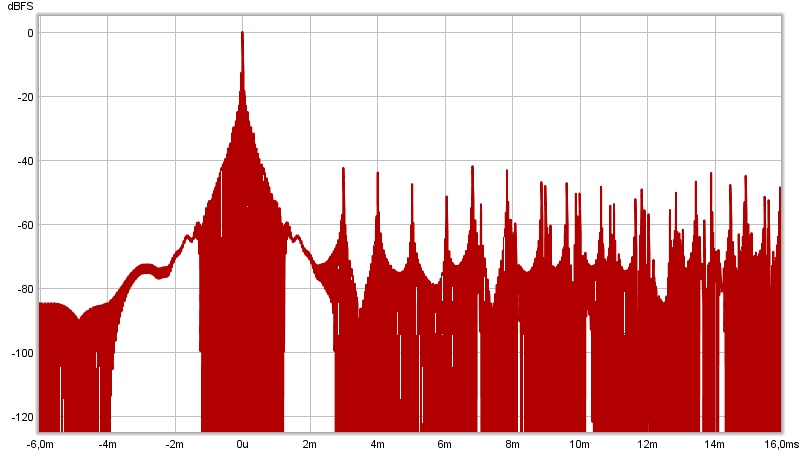
Notice how the peaks are below -40 dB compared to the main signal!
Within the frequency graph it has this result:
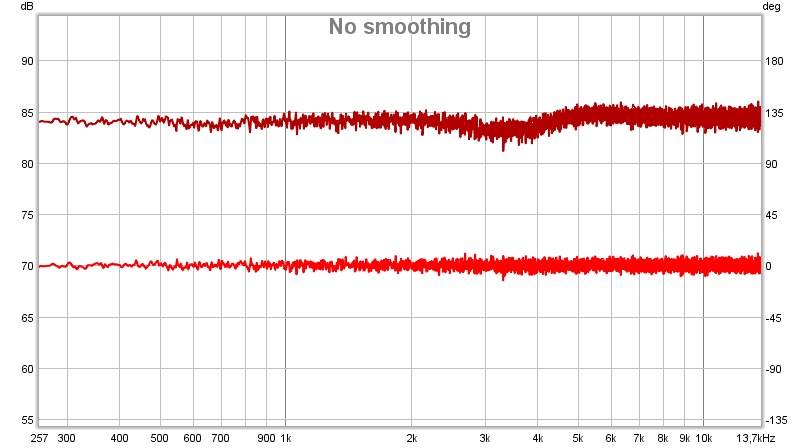
See how it creates this random series of peaks and valleys? While the average of it is still exactly the same curve as without the added reverb.
The reverb starts at 3 ms, as can be seen in the IR (Dirac pulse fed trough the JRiver DSP)
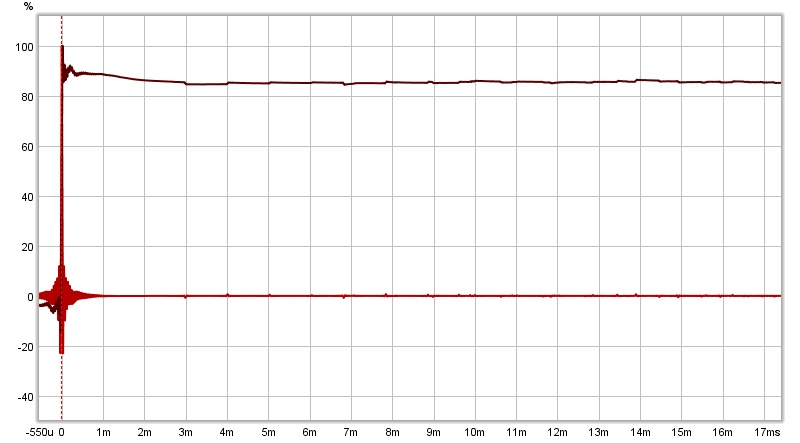
See how small those wiggles are from the reverb, starting at 3 ms?
(the build up around the IR is due to the phase linear EQ that's included in this DSP signal. it's very high frequency only,
usually it doesn't show up in my measurements as the drivers fall off above 18-19K)
I tried something real off base, using a reverb, set to 3 ms pré-delay and as short as possible. Just a hint of this had a remarkable influence on the perceived balance. Way more than I expected.
An IR (presenting dBFs) with this hint of reverb looks like this:
Notice how the peaks are below -40 dB compared to the main signal!
Within the frequency graph it has this result:
See how it creates this random series of peaks and valleys? While the average of it is still exactly the same curve as without the added reverb.
The reverb starts at 3 ms, as can be seen in the IR (Dirac pulse fed trough the JRiver DSP)
See how small those wiggles are from the reverb, starting at 3 ms?
(the build up around the IR is due to the phase linear EQ that's included in this DSP signal. it's very high frequency only,
usually it doesn't show up in my measurements as the drivers fall off above 18-19K)
Attachments
Last edited:
Anyway, time will tell if this solution is here to stay. Day 2 was still convincing enough. More time will tell.
One more graph to show the subtle effect of the reverb, here's the same graph, now smoothed at 1/48:

The larger deviations from a straight line are mid/side EQ tweaks to make it sound as the sides, tonally.
Much less EQ than I used before, but I still need way more time with it.
So far I'm impressed what the effects can be of such a subtle tweak. No wonder we hear big differences between certain setups
that seem to measure pretty identical.
It makes me think one could create a similar effect with timed ambience drivers placed somewhere in the front.
This is a somewhat full range effect I use, slowly diminishing at lower frequencies. What it does do is brighten up the perceived
sounds of the phantom material. The sides (left and Right) only have the house curve applied, no tricks (or side EQ) there.
In these graphs the house curve isn't included, only the deviation from it, the sides would show a flat line if plotted similar.
One more graph to show the subtle effect of the reverb, here's the same graph, now smoothed at 1/48:
The larger deviations from a straight line are mid/side EQ tweaks to make it sound as the sides, tonally.
Much less EQ than I used before, but I still need way more time with it.
So far I'm impressed what the effects can be of such a subtle tweak. No wonder we hear big differences between certain setups
that seem to measure pretty identical.
It makes me think one could create a similar effect with timed ambience drivers placed somewhere in the front.
This is a somewhat full range effect I use, slowly diminishing at lower frequencies. What it does do is brighten up the perceived
sounds of the phantom material. The sides (left and Right) only have the house curve applied, no tricks (or side EQ) there.
In these graphs the house curve isn't included, only the deviation from it, the sides would show a flat line if plotted similar.
Attachments
Last edited:
I've been playing with this latest idea all week. Running a lot of movie sequences trough it and this certainly deserves even more time. I've been playing with different levels and pré-delay and it even makes most of the mid/side EQ's unneeded. Not everything, but all settings are way less than before and I am zooming in on clear, natural sounding voices.
I'll stick with this theme for a while, lets see what it can bring. If I remain convinced it is an actual improvement I'll look into some Stereo tests later on.
There's no end to the possible settings though, so it won't be easy to get it right on the first bet. I do believe it has potential.
I'll stick with this theme for a while, lets see what it can bring. If I remain convinced it is an actual improvement I'll look into some Stereo tests later on.
There's no end to the possible settings though, so it won't be easy to get it right on the first bet. I do believe it has potential.
Still at it with no end in sight. 
Basically trying different algorithm's to see what works best. I started with a plate reverb, next I tried a couple of room algorithm's.
Even if the SPL level of these reflections are down by -30 dB, the perceived sound still changes dramatically. It is quite hard to adjust to taste, as it is the combination of the first wave front, followed by that later wave of reflections (currently timed at ~10 ms, and trying more and less) that totally changes the perceived balance.
I landed upon the Ambience algorithm (a room algorithm from Lexicon) that seems quite promising. Only a touch of it (I have it in an adjustable separate stream beside the phantom sounds, still Home Theatre material only) really makes a difference.
So people wondering why two speakers that measure the same FR curve do sound entirely different sure need to look at how the "in room" reflections (even when way down) can play a huge role in that perceived difference.
The Ambience algorithm is said to be modeled after the Boston Symphony Hall. The first reflections within that algorithm are 'randomised' which serves my purpose beautifully.
I can play with a couple of features like duration and Early/late reflection levels. Being in a separate stream I can further shape it with separate EQ. Simply said: too much adjustable parameters to begin with .
.
However this one is getting me closer to the tonal perception the phase shuffler gave me. Making it easier to match the sides. Working on voices only is not easy.
Songs are much more forgiving (due to the huge batch of internal processing within the songs ). But if I can pick a winner here, I'm pretty sure it should be usable within Stereo playback as well.
). But if I can pick a winner here, I'm pretty sure it should be usable within Stereo playback as well.
Basically trying different algorithm's to see what works best. I started with a plate reverb, next I tried a couple of room algorithm's.
Even if the SPL level of these reflections are down by -30 dB, the perceived sound still changes dramatically. It is quite hard to adjust to taste, as it is the combination of the first wave front, followed by that later wave of reflections (currently timed at ~10 ms, and trying more and less) that totally changes the perceived balance.
I landed upon the Ambience algorithm (a room algorithm from Lexicon) that seems quite promising. Only a touch of it (I have it in an adjustable separate stream beside the phantom sounds, still Home Theatre material only) really makes a difference.
So people wondering why two speakers that measure the same FR curve do sound entirely different sure need to look at how the "in room" reflections (even when way down) can play a huge role in that perceived difference.
The Ambience algorithm is said to be modeled after the Boston Symphony Hall. The first reflections within that algorithm are 'randomised' which serves my purpose beautifully.
I can play with a couple of features like duration and Early/late reflection levels. Being in a separate stream I can further shape it with separate EQ. Simply said: too much adjustable parameters to begin with
However this one is getting me closer to the tonal perception the phase shuffler gave me. Making it easier to match the sides. Working on voices only is not easy.
Songs are much more forgiving (due to the huge batch of internal processing within the songs
Last edited:
- Home
- Loudspeakers
- Full Range
- The making of: The Two Towers (a 25 driver Full Range line array)
